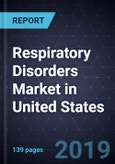Huge Gaps and Unmet Needs Across the Care Continuum Provide Opportunities for Companies to Realize Market Potential
Global resource constraints on health systems are driving a shift to value-based healthcare to reduce cost, increase access, and improve outcomes. In the United States, resource constraints affect more than 20% of the population. The number of respiratory therapists is declining at a rate of 4% to 7%, while the demand for respiratory specialists will increase by 35% by 2020. The role of respiratory therapists is critical in keeping patients out of emergency or hospital care. In the United States, nearly 15% of all primary care visits, or more than 125 million patient visits alone, are for respiratory-related conditions. Within respiratory diseases, 4 conditions primarily contribute to the high burden of respiratory disease. These include asthma, chronic obstructive pulmonary disease (COPD), respiratory tract infections (RTI), and lung cancer. More than 100 million people are affected by the respiratory disease in the United States, which highlights the staggering magnitude of the burden of respiratory /lung disease. The demand-supply gap for resources is expected to widen further with the increase in incidence rates of respiratory diseases.
Though respiratory disease is one of the leading causes of morbidity and mortality among non-communicable diseases, most major respiratory conditions are preventable. Much of the respiratory conditions can be mitigated by improved screening and early diagnosis of patients/public, especially in the smoking population. Government agencies and respiratory associations are strategizing measures to reduce the burden of respiratory and sleep-related disorders to have a profound effect on the respiratory health for patients, reduce economic costs, and improve the quality of life for people. Screening/diagnosis and monitoring account for only 16% of the total spending on respiratory care. A major portion, or more than 60%, of healthcare spending, is still in treatment. Investment trends show that patient medication adherence and monitoring remains the most attractive domain within respiratory care. However, little emphasis was laid on diagnosis/screening, which remains one of the primary unmet needs in the respiratory care continuum. Screening and patient medication adherence remain key market growth opportunities for OEMs within the respiratory care industry.
This research service provides an overview of the unmet needs and gaps in the respiratory disease sector and provides details on investment/funding in the respiratory sector. The unique value of this study is that it provides insights, challenges, and unmet needs for 10 major respiratory and sleep apnea conditions. This research also identifies growth opportunities by care continuum and technologies within sleep and respiratory care.
Table of Contents
Companies Mentioned (Partial List)
A selection of companies mentioned in this report includes, but is not limited to:
- Apax Medical
- Royal Philips








